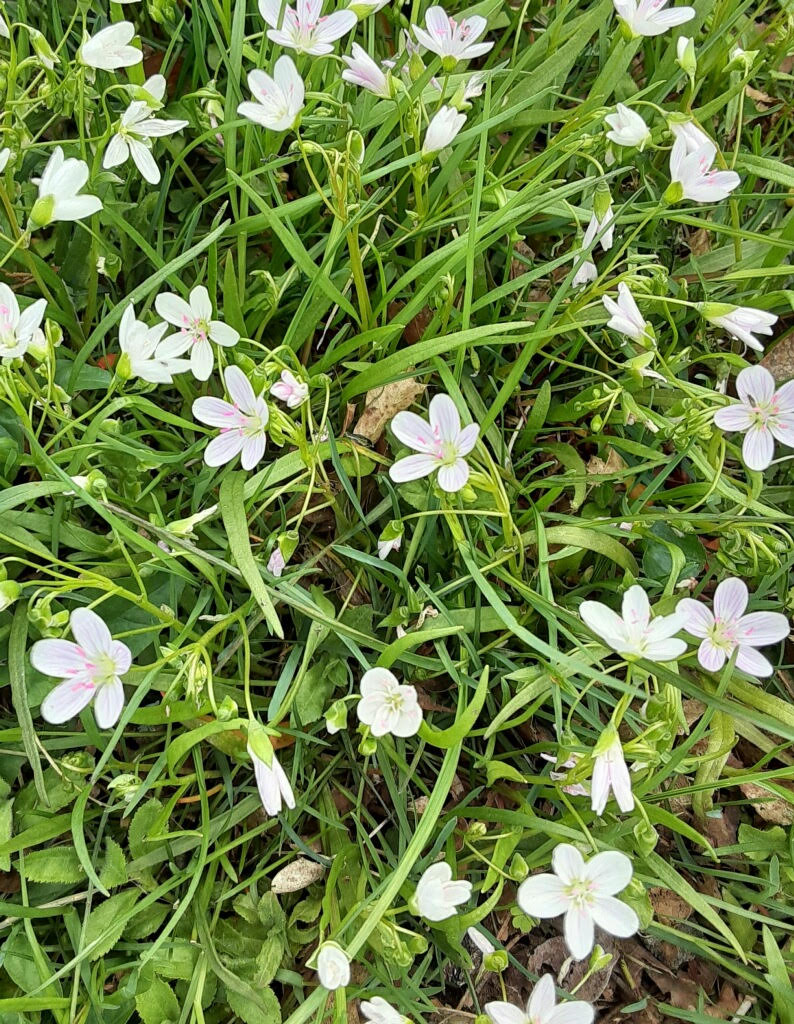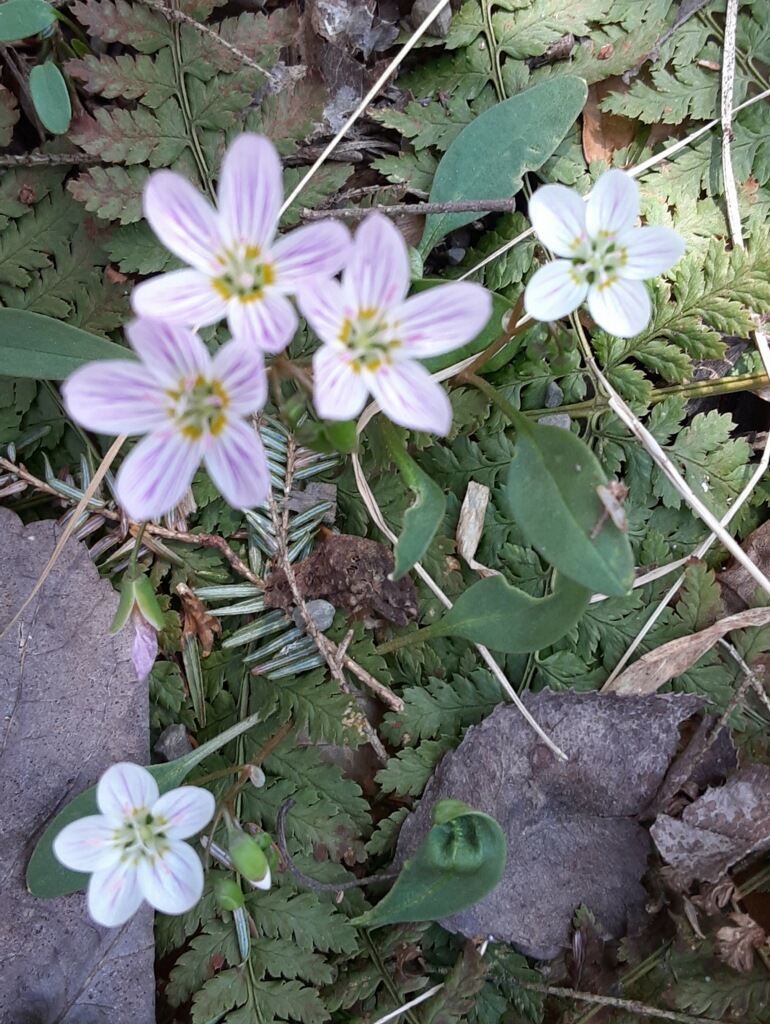By Susan Sprout
Look around. There is much beauty to be found in the spring, and especially if it is a wild flower aptly named Spring Beauty! Sometimes I have trouble finding them when they bloom. I’m either too early or too late. Last week, I was happy (and relieved) to find large colonial patches of two species of Spring Beauties native to North America. One in Sullivan County – Claytonia caroliniana and one in Montour County – Claytonia virginica. Check out the species’ names. Bet you can tell where these plants were first found growing and identified. Both are very similar in looks, except for their leaves – C. caroliniana’s leaves are wider in their mid-section and don’t resemble the thinner, almost grass-like leaves of C. virginica.

Spring Beauties aren’t very tall, up to about six inches when blooming. They have small white or pink flowers that have pointed tips and dark pink veins acting as nectar guides for pollinators, like bees, bumblebees, and flies. Researchers have counted up to seventy different species of pollinators attending them. Not surprising, as they have a wonderful sweet scent that floats around them in the cool dampness of the woods. In fact, I sensed them with my nose before I found them with my eyes.

These plants like the rich, loamy soil and dappled sunlight of moist woods. They grow from rounded underground tubers. According to some wildcrafters, their tubers have a sweet chestnut taste and the texture of potatoes when they are baked and eaten. They have only one pair of opposite leaves, found halfway up the thin flower stem. Geneticists are interested in Spring Beauties because they have an inconsistent number of chromosomes. They vary in number from plant to plant. Most species, including us, have a fixed number of chromosomes in our genetic make-up. Deer are interested in them, too, as a food source. Get out there quickly and find some Spring Beauties before their leaves and flowers are gone.

